Table of Contents
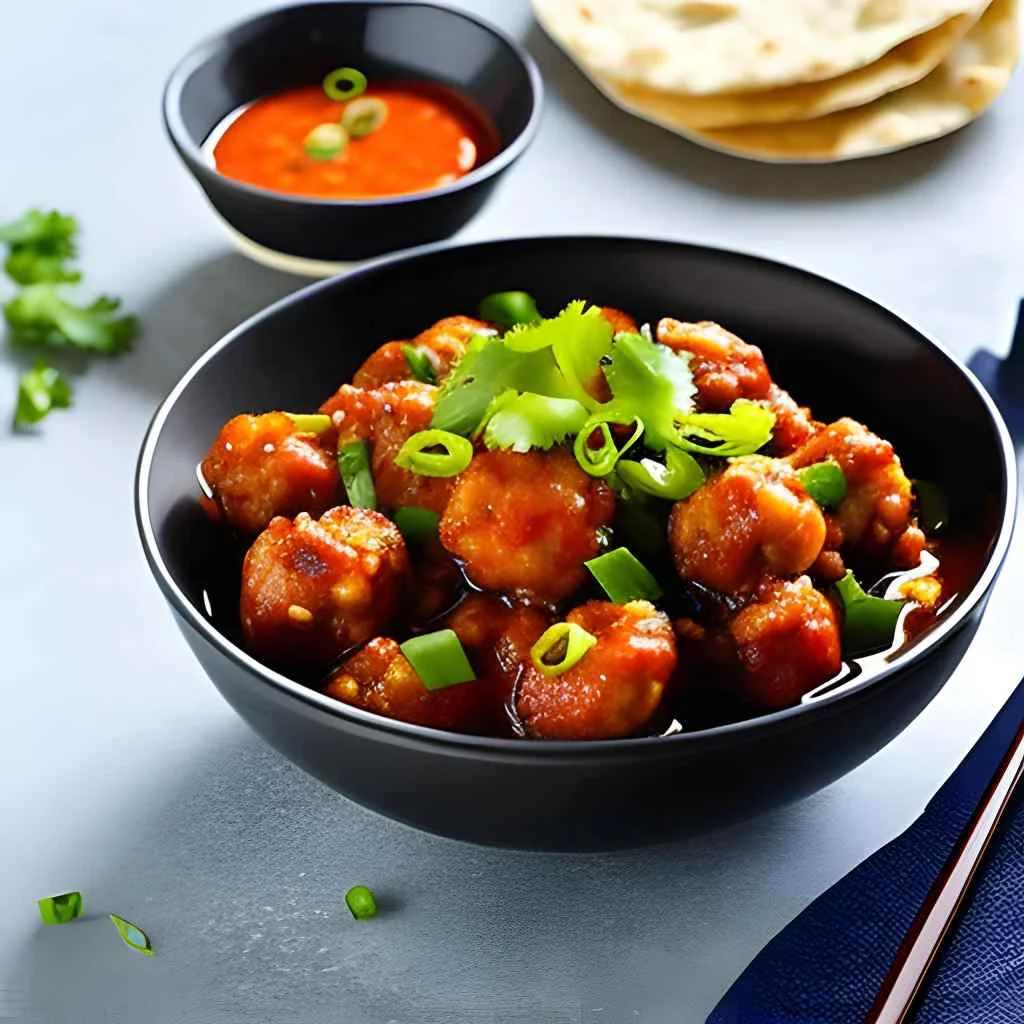
Introduction
Manchurian with its tantalizing flavors and diverse range of dishes, has captured the hearts and taste buds of food enthusiasts across the globe. From its humble beginnings to its evolution into an international sensation, this Article, “The Gourmet’s Guide to Manchurian Delights,” offers an in-depth exploration of the rich and savory world of Chinese cuisine.
Originating from the northeastern region of China, Chinese cuisine boasts a delightful blend of flavors, textures, and ingredients. It has grown to encompass an array of vegetarian and non-vegetarian dishes, each offering a unique culinary experience. The distinct appeal of its lies in its versatility, as it caters to a broad spectrum of tastes, from mildly flavored to exquisitely spicy.
This Article aims to be your comprehensive guide to Manchurian dish, offering detailed insights into the history, preparation techniques, and an array of recipes. Whether you’re a seasoned chef or a culinary enthusiast looking to experiment with exotic flavors, “The Gourmet’s Guide to Manchurian Delights” has something for everyone.
The roots of this Article reveal the secrets behind its delectable sauces, and explore international adaptations. This Article promises to be a flavorful journey. Additionally, it uncovers the nutritional aspects, spices, herbs, and the heart of Manchurian dishes — the sauces.
By the end of this culinary exploration, you’ll not only have a deep understanding of Manchurian dish but also the skills to prepare these dishes in the comfort of your own kitchen. So, brace yourself for an adventure into the world of Manchurian flavors and prepare to savor the culinary delights that await you.
Unveiling the Origins of Manchurian Delights
Manchurian dish, often hailed for its rich and diverse flavors, has a fascinating history that dates back to ancient China. It finds its roots in the northeastern region of China, historically known as Manchuria. This unveils the captivating origins of the Manchurian dish and its journey from a regional specialty to a global sensation. It often hailed for its rich and diverse flavors, has a fascinating history that dates back to ancient China.
The Birth of Manchurian dish
It’s inception can be traced back to the Manchu people, who were native to the northeastern regions of China. These regions had a climate that was conducive to growing a wide variety of ingredients, including soybeans, wheat, and various vegetables. The cuisine evolved as a reflection of the available resources and the local Manchu culture.
One of the defining features of Manchurian dish is its emphasis on balance. It sought to harmonize various flavors, from sweet to savory, spicy to mild. This balance was meant to create dishes that would be both delicious and nourishing.

Influence of Local Ingredients
Something inherently tied it to the ingredients available in the region. As a result, ingredients such as soy sauce, tofu, and ginger have become staples in many Manchurian dishes. Soy sauce, in particular, plays a vital role in enhancing the umami flavor of many Manchurian recipes.
Additionally, the cuisine often features vegetables like Bok choy, mushrooms, and water chestnuts. The region’s cold climate encouraged the use of hearty and filling ingredients.
Cultural Influences
The cultural interactions of the region also influenced it. As the historical gateway between China and Mongolia, Manchuria witnessed the exchange of culinary traditions, leading to the incorporation of unique cooking techniques and flavors.
The flavors and ingredients of its were further enriched during the Qing Dynasty. I knew emperors of the Qing Dynasty for their love of Manchurian dishes, leading to the refinement and popularization of these recipes in the Chinese imperial courts.
Evolution into an International Sensation
The journey of it from regional delicacy to an international sensation is a testament to its universal appeal. As Chinese immigrants spread across the globe, they brought with them the flavors of It, adapting it to suit local tastes. Today, Manchurian dishes are enjoyed by people from diverse cultural backgrounds, and they have become an integral part of the global culinary landscape.
The Art of Preparing Scrumptious Manchurian Balls
In our gastronomic journey through the world of it, we now dive into the heart of Manchurian culinary artistry – the art of preparing those delectable Manchurian balls. These mouthwatering creations, whether vegetarian or non-vegetarian, are a hallmark of this cuisine. In this article, we’ll explore the techniques, secrets, and nuances behind crafting the perfect Manchurian balls.
The Essence of Balls
Manchurian balls, also known as its dumplings, are a delicious amalgamation of finely chopped vegetables or meat, bound together with a flavorful mixture. They are then deep-fried to a crispy, golden perfection before being smothered in the iconic Manchurian sauce.
The secret to a great Manchurian ball lies in achieving the right texture – a crispy exterior that gives way to a tender, juicy interior. The ingredients in the mixture can vary, allowing for endless creativity and versatility in crafting its balls.
The Vegetarian Balls
For those who prefer a plant-based diet, vegetarian Balls are a popular choice. The key to a great vegetarian ball is the careful selection of vegetables. Common ingredients include finely grated cabbage, carrots, bell peppers, and spring onions. These are bound together using a mixture of all-purpose flour and cornflour, seasoned with a blend of spices and herbs.
Once the mixture is prepared, they shape small portions into balls and are deep-fried until they achieve a gorgeous, golden-brown hue. The result is a crispy exterior that contrasts beautifully with the tender, flavorful core.
The Non-Vegetarian Delight: Chicken Balls
Chicken balls are a carnivorous delight. The process is similar to vegetarian balls but involves small pieces of chicken, often marinated in a mixture of soy sauce, ginger-garlic paste, and other seasonings. I coated these chicken pieces in a cornflour and all-purpose flour mixture before being fried to perfection.
The interplay of spices and the tenderness of the chicken make for a heavenly combination. When generously drenched in its sauce, it creates a symphony of flavors that has won over the hearts of many.
Crafting the Perfect Ball
Whether vegetarian or non-vegetarian, crafting the perfect ball requires a keen understanding of a few key principles:
- Mixture Consistency: The mixture should be moist enough to hold together but not too wet, or the balls won’t hold their shape during frying. Careful proportions of flour and water are essential.
- Seasoning: The choice and balance of seasonings are pivotal. Soy sauce, garlic, ginger, green chilies, and other ingredients contribute to the distinctive its flavor profile.
- Frying Technique: The oil should be hot enough to ensure that the Manchurian balls cook quickly and retain their crispness. Be sure not to overcrowd the frying pan or wok.
- Drain and Pat: After frying, it’s crucial to drain the balls on paper towels to remove excess oil. A gentle pat ensures they remain crispy.
The art of preparing its balls is a delightful culinary journey. It involves experimenting with flavors and perfecting the techniques to achieve that irresistible texture and taste. Whether you’re craving a vegetarian delight or savoring the flavors of chicken, these balls are a testament to the versatility of Chinese cuisine.
The Allure of Manchurian Sauces
Welcome to another savory part of our culinary expedition into the world of Manchurian Dish. In this segment, we explore the cornerstone of it dishes – the tantalizing range of Manchurian sauces. These sauces are the essence of Chinese cuisine, infusing every bite with a symphony of flavors that awaken the palate.
A World of Sauces
Manchurian sauces are a testament to the rich diversity of this cuisine. They come in various forms, each with its unique profile of tastes and textures. Let’s explore some of the most prominent its sauces that have captured the hearts and taste buds of food enthusiasts around the world.
1. Soy Sauce Base
At the heart of it is the beloved soy sauce base. This sauce provides a salty, savory, and slightly sweet foundation for many Manchurian dishes. Varieties include light soy sauce for a milder flavor and dark soy sauce for a richer, deeper taste. It’s also a key ingredient in many Manchurian stir-fry recipes.
2. Manchurian Sauce
The eponymous Manchurian sauce is the star of the show. This versatile sauce adds an enticing complexity to Manchurian balls, noodles, and fried rice. It’s typically a blend of soy sauce, ginger, garlic, red chilies, and a hint of sweetness, creating a perfect balance of flavors that defines it.
3. Schezwan Sauce
For those who crave a fiery kick, Schezwan sauce is a popular choice. This sauce hails from the Sichuan region of China and has found a beloved place in it. It’s made from fiery red chilies, garlic, and spices, creating a pungent and spicy flavor profile that’s not for the faint of heart.
4. Sweet and Sour Sauce
The sweet and sour sauce adds a delightful contrast to the savory notes of Manchurian dishes. This sauce combines sugar, vinegar, and fruit juices to create a harmonious blend of sweetness and tartness. It’s often used in dishes like sweet and sour Manchurian.
5. Hoisin Sauce
Hoisin sauce, sometimes referred to as Chinese barbecue sauce, is a sweet and savory condiment made from soybeans, garlic, vinegar, and various spices. It imparts a rich, umami flavor to Manchurian dishes and is often used in stir-fries and marinades.
6. Chili Garlic Sauce
Chili garlic sauce adds a bold and zesty kick it. Made from red chilies and garlic, this sauce is a favorite for those who relish the fusion of heat and flavor. It’s often used as a dipping sauce for Manchurian balls and appetizers.
The Art of Balancing Flavor
Manchurian chefs are masters of balancing flavors. Each sauce is selected or crafted to create the perfect harmony of sweet, savory, salty, and spicy notes. Achieving this balance is at the heart of Manchurian culinary artistry.
The choice of sauce can transform a dish entirely. For instance, sweet and sour sauce adds a delightful contrast to the spiciness of Schezwan sauce. Similarly, the deep, robust flavor of hoisin sauce can elevate the taste of a Manchurian stir-fry to new heights.
The Dance of Vegetables in Manchurian
In the vivid tapestry of it, vegetables take center stage, performing a delightful dance of flavors and textures. This article unveils the art of selecting, preparing, and showcasing vegetables in Manchurian dishes, adding vibrancy, nutrition, and a symphony of tastes to every bite.
The Vegetable Ensemble
Manchurian dishes are a celebration of vegetables. They bring together a diverse ensemble of vegetables, each contributing its unique character. Here are some of the common vegetables featured in Manchurian dishes:
Lorem ipsum dolor sit amet, consectetur adipiscing elit. Ut elit tellus, luctus nec ullamcorper mattis, pulvinar dapibus leo.
- Cabbage: Finely shredded cabbage is a classic addition to many Manchurian recipes. It provides a pleasant crunch and absorbs the flavors of the sauce beautifully.
- Cauliflower: Cauliflower florets, when coated in Manchurian sauce and fried to a golden crisp, offer a delightful contrast between the tender inside and the crispy exterior.
- Carrots: Carrots add a touch of sweetness and a vibrant color to Manchurian dishes. They are often julienned or diced for that perfect bite.
- Bell Peppers: Bell peppers in various hues – green, red, or yellow – contribute to the visual appeal and provide a juicy, slightly sweet note.
- Beans: String beans or green beans are another popular choice. They bring an earthy crunch to the dish.
- Spring Onions: These are not just used as a garnish but also feature prominently in Manchurian recipes, imparting a mild oniony flavor.
The Vegetable Selection
The choice of vegetables can vary based on personal preferences and seasonal availability. Some recipes call for a single vegetable, while others create a medley of colors and flavors.
The Preparation Ritual
The preparation of vegetables is as important as their selection. Here's how it's done:
1. Washing and Drying: Begin by washing the vegetables thoroughly. Afterward, make sure they are well-dried to prevent excess moisture when frying.
2. Uniform Sizing: Cut or slice the vegetables into uniform sizes to ensure even cooking. This not only enhances the dish’s aesthetics but also guarantees consistent texture.
3. Blanched or Raw: Depending on the recipe, some vegetables may be blanched briefly before frying, while others are used raw. Blanching helps in achieving the desired texture.
4. Coating with Batter: Before frying, many Manchurian recipes call for coating the vegetables with a seasoned batter. This batter creates a crispy outer layer, which contrasts with the tender interior.
5. The Perfect Crunch: Frying the vegetables to the right level of crispiness is crucial. It should be done over high heat, and the golden-brown results should be achieved in a matter of minutes.
Vegetables in Manchurian dishes contribute not only to the dish’s flavor but also to its texture and visual appeal. Their innate freshness, when paired with the savory Manchurian sauce, results in a mouthwatering medley of tastes that delight the senses.
Manchurian Variations: Beyond the Classics
dwith its expansive repertoire, doesn’t stop at the classics.we’ll journey into the uncharted territories of Manchurian variations that have emerged as modern twists, fusion delights, and regional interpretations. These innovative creations extend the boundaries of traditional Manchurian, acting aggressively of culinary creativity.
The Fusion Wonders
Fusion cuisine thrives on the amalgamation of flavors, and Manchurian dishes have become a playground for experimentation. Here are some fusion wonders that have made their mark:
1. Indo-Chinese Fusion: This fusion brought the best of Indian spices and Chinese cooking techniques together. Manchurian recipes evolved to incorporate Indian elements, creating dishes like Chili Paneer, Gobi Manchurian, and Hakka Noodles, which are beloved by many.
2. Thai-Inspired Manchurian: With the inclusion of Thai ingredients like lemongrass, coconut milk, and Thai herbs, its dishes have transcended borders, offering a delectable Thai-inspired twist.
3. Mediterranean Infusion: Imagine a dish with a dash of Mediterranean flavor. Chickpeas, tahini, and Mediterranean spices add a unique twist, creating a fusion of Asian and Mediterranean tastes.
4. Japanese Fusion: The subtle umami of Japanese cuisine has blended seamlessly with its dishes. Ingredients like miso, seaweed, and bonito flakes are incorporated to create intriguing new flavors.
Regional Interpretations
It has not only fused with other cuisines but has also taken on regional interpretations within India. Each region puts its unique stamp on Manchurian recipes:
1. Mumbai’s Street-Style Manchurian: Mumbai’s vibrant street food scene has given birth to a spicy and tangy version of it, often paired with pav (bread rolls) for a quick and satisfying meal.
2. Kolkata’s Crispy Kofta: In the city of joy, its koftas, made with ingredients like paneer, potatoes, and a melange of spices, are a popular local favorite.
3. South Indian Twist: Down south, the flavors of coconut and curry leaves are infused into it, offering a unique South Indian twist to this iconic dish.
4. Delhi’s Tandoori Fusion: The North Indian capital has given us Tandoori Manchurian, where the smoky essence of the tandoor oven meets the savory its sauce.
The Modern Era Creations
1. Baked Manchurian: For the health-conscious, baked versions of Manchurian offer a healthier alternative to the traditional deep-fried variety.
2. Gluten-Free Manchurian: With a growing demand for gluten-free options, Manchurian recipes now feature substitutes like chickpea flour or rice flour to cater to this dietary preference.
3. Vegan Manchurian: The vegan movement has left its mark on it, with innovative recipes using tofu and plant-based ingredients, proving that you don’t need animal products to enjoy the flavors of Manchurian.
Mastering the Art of Manchurian Fusion
In our journey through the diverse landscape of Manchurian, we have explored a variety of fusion wonders, regional interpretations, and modern-era creations. Now, it’s time to dive deeper into the art of mastering Manchurian fusion. This article will provide you with valuable insights, tips, and techniques to create your own fusion its dishes that cater to your unique tastes and preferences.
Understanding Fusion Fundamentals
Fusion cuisine is an intricate dance between contrasting flavors, ingredients, and techniques. To master Manchurian fusion, you need to comprehend a few fundamental principles:
- Balance of Flavors: Fusion doesn’t mean overpowering one cuisine with another. Strive for a harmonious balance where each ingredient complements the other, creating a delightful synergy.
- Ingredient Pairing: Experiment with diverse ingredients from both cuisines. For example, the richness of Indian spices can be paired with the umami of soy sauce and the heat of chili in Manchurian recipes.
- Technique Integration: Fusion isn’t just about ingredients; it’s about cooking techniques too. Learn to incorporate cooking methods from different culinary traditions to create unique textures and flavors.
- Experimentation and Creativity: Don’t be afraid to experiment. The most exciting fusion dishes often arise from creative experimentation.
Conclusion
In exploring the historical and cultural significance of the Manchurian, we’ve unveiled a tapestry woven with intricate stories, traditions, and legacies. This region, nestled in the northeastern part of China, holds a rich history shaped by dynasties, invasions, and the confluence of diverse ethnicities. The Manchurian’s pivotal role in shaping Chinese history, particularly during the Qing Dynasty, cannot be understated. Its influence permeates aspects of Chinese culture, cuisine, and identity, leaving an indelible mark on the nation.
Moreover, the Manchurian’s distinct cultural elements, from its unique language to its traditional clothing and martial arts, serve as a testament to its vibrant heritage. Its natural landscapes, encompassing lush forests, rolling hills, and the majestic Changbai Mountain, add to its allure, captivating both locals and travelers alike.
As we reflect on the Manchurian’s past and present, it becomes evident that its significance transcends borders, resonating globally. Through its history of resilience, adaptation, and contributions to China’s cultural mosaic, the Manchurian stands as a testament to the enduring spirit of a region shaped by its past yet embracing its future.
FAQ (Frequently Asked Questions)
The Manchurian played a crucial role in China’s history, particularly during the Qing Dynasty, when the Manchus established the last imperial dynasty. Their rule shaped China’s borders, governance, and culture, leaving a lasting impact on the nation.
.The Manchurian boasts unique cultural elements, including the Manchu language, traditional dress like the qipao and changshan, and martial arts such as Bajiquan and Piguaquan. These facets contribute to the region’s rich heritage.
The diverse landscape of the Manchurian, encompassing forests, mountains, and rivers, has influenced its traditions, agriculture, and even cuisine. For instance, the fertile land has contributed to the region’s agricultural practices and culinary diversity.
Yes, the Manchurian region attracts tourists interested in exploring its historical sites, natural beauty, and cultural offerings. Popular destinations include Harbin, known for its ice and snow festival, and Changbai Mountain, famed for its stunning scenery and biodiversity.
Like many regions, the Manchurian has embraced modernity while preserving its cultural heritage. Economic development, technological advancements, and urbanization have influenced the region’s evolution, balancing tradition with progress.
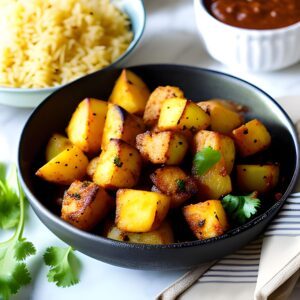
जीरा आलू रेसिपी: एक स्वादिष्ट भारतीय व्यंजन
Table of Contents जीरा आलू रेसिपी: एक स्वादिष्ट भारतीय व्यंजन जीरा आलू रेसिपी: एक स्वादिष्ट भारतीय व्यंजन परिचय जीरा आलू, एक सरल और स्वादिष्ट व्यंजन,
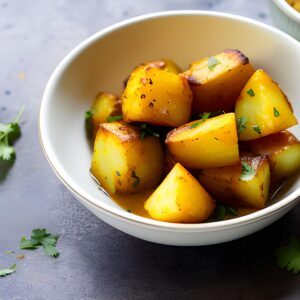
Jeera Aloo Recipe: A Flavorful Indian Delight
Table of Contents Introduction Jeera Aloo, a simple yet flavorful dish, holds a special place in Indian cuisine. This delightful combination of potatoes and cumin
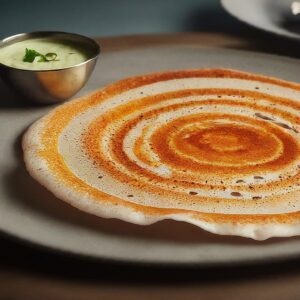
डोसा: एक व्यापक मार्गदर्शिका
परिचय डोसा, भारतीय उपमहाद्वीप का एक प्रसिद्ध और प्रिय व्यंजन, अपनी विशिष्टता और स्वाद के लिए दुनिया भर में प्रसिद्ध है। इस लेख में, हम
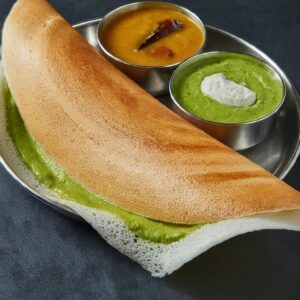
The Delectable Journey of Dosa: From South India to the World
Introduction Who doesn’t love a good dosa? This iconic South Indian dish has captured the hearts and taste buds of food lovers worldwide. But what
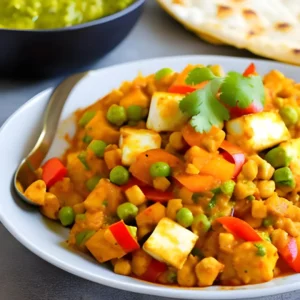
Paneer : A delicious Journey
Table of Contents Table of Contents Introduction This article is your passport to the delectable world of paneer, a versatile dairy delight that has captured

Savor the Flavor: Exploring Authentic Manchurian Recipes and Origins
Table of Contents Introduction Manchurian with its tantalizing flavors and diverse range of dishes, has captured the hearts and taste buds of food enthusiasts across